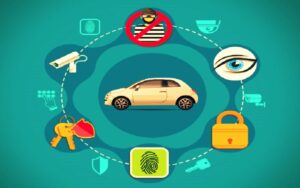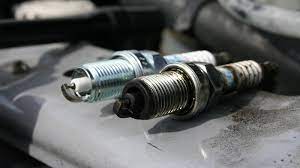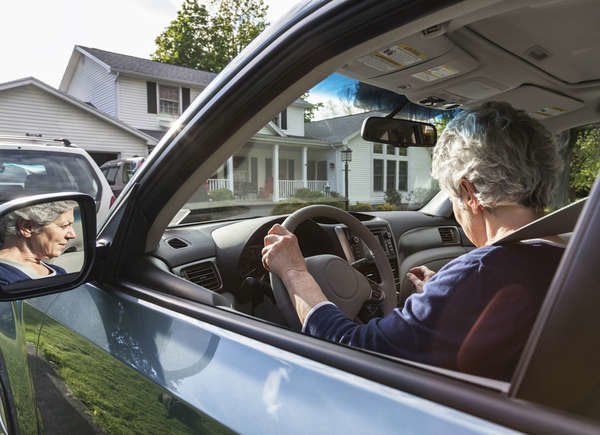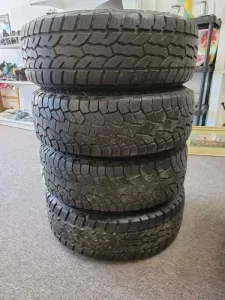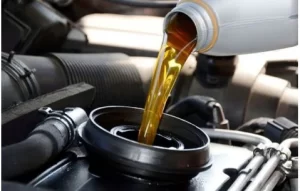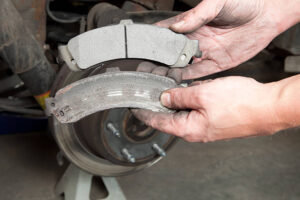
Brake pads may not seem like a suspect in car maintenance, but they do need to be replaced due to wear and tear. Not only are brake pads essential for high-performance cars, but also every vehicle at some point.
Replace brake pads in Brisbane when they become worn out, when you hear or feel a squeaky sound, or when the car takes longer to stop. Faulty brakes can be dangerous as they cause the friction material to diminish, resulting in poor braking.
You can drive with peace of mind, knowing that you have a safe car. It also prevents any future problems from occurring due to excessive wear.
What is the cost of replacing brake pads?
Each car has a different cost for replacing brake pads. The brake system may need to be inspected and other parts than brake pads replaced. The brake pads must be replaced both on the left and right side of the axle.
You may also need to replace brake rotors and brake fluid. The cost of replacing only brake pads can range from $130 up to $400 per axle. Brake pads are usually priced at $150 per axle.
Sydney’s average brake pad cost is $180. Different car manufacturers often charge different prices for brake pads. The brake pad cost of a Toyota, for example, is much lower than that of a BMW.
What is a brake pad?
Different car manufacturers often charge different prices for brake pads. For example, brake pad replacement costs for Toyota are significantly lower than the cost of The braking system, which includes the brake pads, is located behind the discs rotors, on the inside wheel.
The brake pad is part of the car’s machinery that helps the brakes work. The brake pads are about the size of a palm. They also have a backing plate that contains friction material. Some friction materials are made of ceramic and carbon, which allows heat to be dissipated better than the normal brake pads.
Brake pads wear out over time. This material is not permanent and will wear out over time. The replacement brake pad will be either two brake pads, or four brakes pads depending on your car type.
How do brake pads work on cars?
When the driver presses the brake pedal, the calliper moves and presses firmly against disc rotor. The friction that occurs when the calliper contacts the rotor causes the car to come to a stop.
The primary function of disc brakes and brake pads is the same, even though the number may vary from car to car. Some cars use the brake system components on the rear wheels instead of the front brakes.
How do disc brakes work?
Disc brakes are activated by squeezing the rotor, not the wheel. This action is transmitted through a cable and friction slows the car to a halt.
Drum brakes are usually found at the back of standard cars. High performance cars often have disc brakes at all four wheels.
How do drum brakes work?
Drum brakes, which are typically located at the rear end of the vehicle, include springs and both emergency and adjuster brake mechanisms.
The brake drums are similar to disc brakes, in that they stop a vehicle by using hydraulic pressure to create friction between the brake shoe and disc. This friction will stop the turning of the wheel and bring a vehicle into a halt. Most older, heavier vehicles use these types of brakes.
The brake drums are similar to disc brakes, in that they stop a vehicle by using hydraulic pressure to create friction between the brake shoe and disc. This friction will stop the turning of a wheel and bring a vehicle into a halt. This type of brake is most commonly found on older, heavier vehicles.
Disc Brakes Vs Drum Brakes?
Both types of brakes are designed to stop a vehicle in a similar way. Disc brakes have a smaller pad than their counterparts on drums. Drum brakes are in contact with brake shoes, while pads usually consist of a thin strip of friction material. Drum brakes can handle more weight because they have more surface area.
Drum brakes tend to be used on older vehicles and heavier vehicles, while pads are typically used on lighter vehicles and passenger cars.
Drum brakes tend to be used on older vehicles and heavier vehicles, while pads are typically used on lighter vehicles and passenger cars.
How long do brake pads last?
It is recommended that brake pads be checked at this time. They last approximately 100,000km.
The brake pads of a vehicle that is driven less often and on shorter journeys will last longer than a vehicle that makes frequent long trips.
The brake pads will last longer the less they are used. The brake pads last longer if the car is not used as much.
When Should you replace brake pads?
You may hear a squealing or squeaking sound when brake pads wear out. This is your first indication that you need to replace brake pads.
You can either inspect the brakes yourself or have the vehicle serviced if you feel that the pads are worn.
If a vehicle is not serviced, it is usually when the mileage is just below 100,000km. If you use your vehicle excessively, such as on frequent long distance trips, the brake pads may need to be replaced prematurely. So keep an eye out for the odometer!
You should not replace brake pads yourself. Instead, you should hire a professional mechanic. The mechanics will have all the necessary tools and equipment, and can also do a complete check to determine if any other parts need to be upgraded.
What Does squeaky brakes mean
Brakes that squeak are usually a sign to check brake pads, which may lead to replacement.
When your brakes are squeaky, they may still be in good shape but be on the verge of needing replacement.
How to check your brake pads
You can do a quick check yourself if you notice that your brake pads have worn out before you take it to the mechanic.
The vehicle must be lifted with the wheels off so that the brake pads can then be examined. This is a very difficult task to do by yourself, as you don’t have the necessary equipment to lift a vehicle. It is best to take it to a mechanic.
The mechanic will determine if brake pads have worn out and if they should be replaced.
Oft, brake fluid and discs rotors are also required to be inspected along with the brake pads. This routine inspection can be completed by your mechanic.


